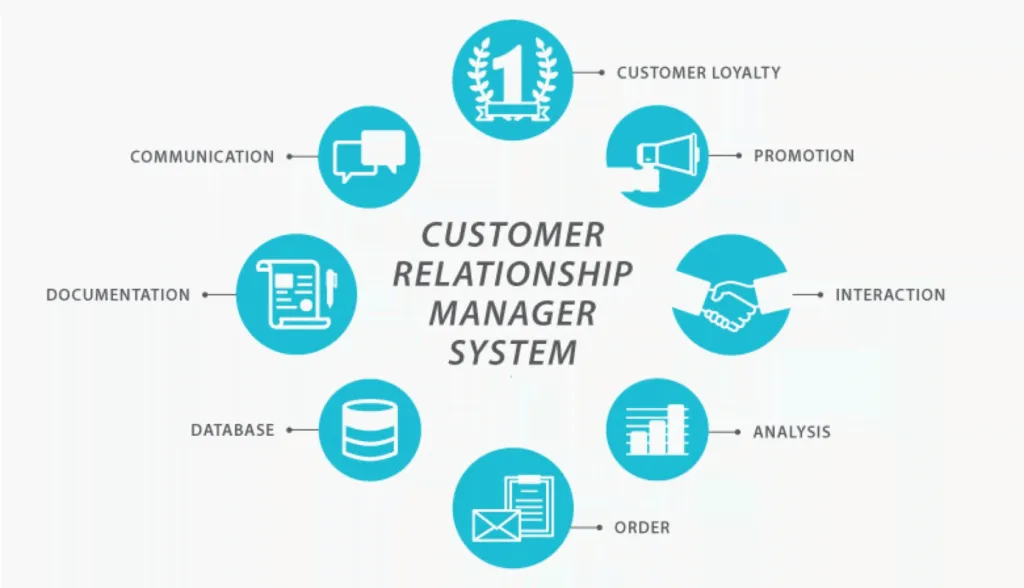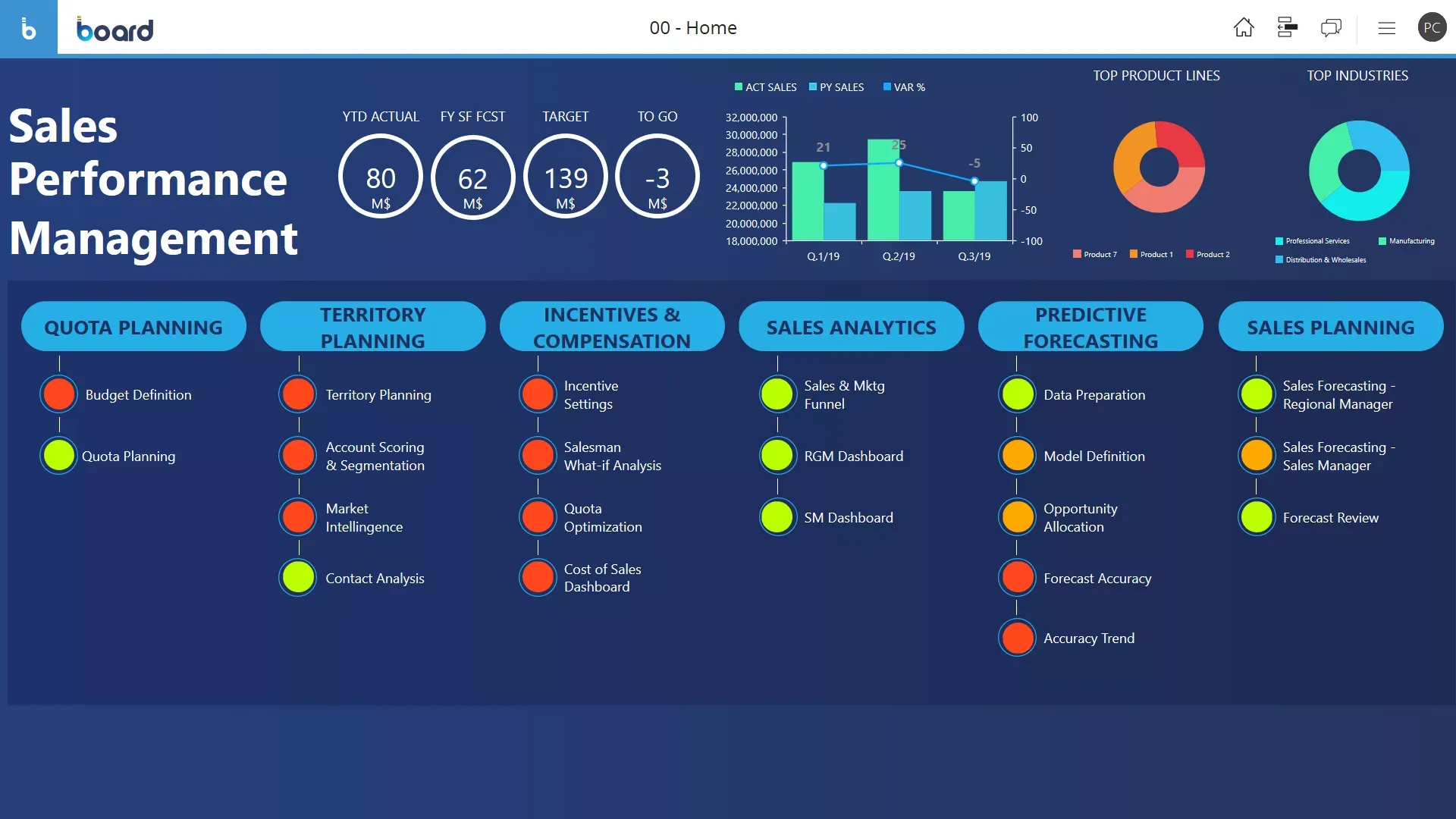Introduction to Sales Goals

What are Sales Goals
Sales goals are specific objectives set by a business or sales team to guide and measure the performance of their sales activities. These goals are crucial for driving sales strategy, enhancing sales processes, and boosting overall business growth. Effective sales goals are often quantifiable, align with broader strategic sales goals, and are integral in managing sales teams and individual sales reps.
To maximize effectiveness, sales goals should reflect smart sales goals criteria—meaning they are Specific, Measurable, Achievable, Relevant, and Time-bound.
Establishing clear sales goals helps ensure that sales teams and sales reps are working towards the same targets, which can include increasing customer lifetime value, achieving a certain sales revenue figure, or improving customer acquisition rates.
In setting sales goals, it's also vital to consider the sales cycle, utilize sales metrics effectively, and continuously track progress to adapt strategies as necessary. This approach helps maintain alignment with the dynamic market conditions and organizational changes.
Why Do You Need Sales Goals
Sales goals are crucial for steering the direction and focus of your sales team, optimizing sales strategies, and enhancing overall business performance. They set a benchmark for what needs to be achieved within a specific timeframe, helping to align the efforts of sales reps and teams with the company's broader objectives.
Key Reasons to Set Sales Goals
1. Direction and Motivation:
- Establishing sales goals gives your sales team clear targets to aim for.
- This clarity helps in prioritizing resources and efforts towards achieving specific outcomes, such as increasing sales revenue by 20% annually.
- By setting incremental milestones within the sales process, teams can maintain focus and motivation throughout the sales cycle.
2. Performance Measurement:
- Sales goals allow for the evaluation of sales team effectiveness and efficiency.
- Measuring performance against predefined targets helps identify areas of strength and opportunities for improvement.
- Utilizing sales metrics and KPIs, such as customer acquisition cost or customer lifetime value, provides a quantitative basis to assess whether sales strategies are working or need adjustment.
3. Resource Optimization:
- Effective sales goals ensure that resources are allocated in a way that maximizes sales outcomes.
- Focusing resources on high-impact activities increases ROI and reduces wasteful spending.
- For example, if a goal is to enhance customer lifetime value, resources might be better spent on improving customer relationship management rather than merely increasing the volume of cold calls.
4. Strategic Alignment:
- Sales goals help in aligning the sales team’s efforts with the company's strategic objectives.
- This alignment ensures that every sales activity contributes towards broader business growth and success.
- Regular review meetings can help realign goals with strategic sales goals examples, ensuring every sales rep and team is on the same page.
How to Set SMART Sales Goals

Establishing SMART sales goals is a strategic method that guarantees your sales objectives are Specific, Measurable, Achievable, Relevant, and Time-bound.
These criteria help refine your sales objectives, making them clear and actionable, which in turn boosts the effectiveness and motivation of your sales teams and sales reps. Here's how to set SMART sales goals:
Understanding SMART Criteria

- Specific: Goals should be clear and specific to avoid ambiguity.
- Measurable: There should be a way to measure progress towards each goal.
- Achievable: Goals should be realistic and attainable to keep your team motivated.
- Relevant: Each goal should contribute towards broader business objectives.
- Time-bound: There should be a deadline for achieving each goal.
Step-by-Step Guide to Setting SMART Sales Goals
Specific
Your sales goals should be clear and specific to avoid any ambiguity. Instead of a vague goal like "increase sales," opt for a more targeted objective, such as "increase sales revenue by 15% in the next quarter through smart sales strategies."
Identify which sales metrics or key performance indicators (KPIs) will be used to measure success, such as sales revenue, customer acquisition rate, or customer lifetime value.
Measurable
Make sure each goal has a numeric value or a clear criterion that allows you to track progress. For example, aiming to add 100 new customers or increase customer lifetime value by 10%.
Utilize sales dashboards and sales metrics to regularly monitor these numbers, ensuring that every sales rep and sales manager knows at any point whether they are on track to meet their goals.
Achievable
Set realistic goals considering your current resources, sales team capabilities, and market conditions. A goal to triple sales in one year might not be achievable without the necessary increase in sales reps or budget.
Break down larger sales goals into smaller, manageable objectives, such as monthly or quarterly targets for sales teams, to keep everyone motivated and on track.
Relevant
Ensure that your sales goals are aligned with the broader strategic sales goals of the company. For instance, if the company's focus is on expanding into new markets, set sales targets around acquiring customers in those areas.
Goals should be relevant to the people working towards them. For sales reps, objectives should leverage their strengths and help them grow professionally.
Time-bound
Every goal should have a deadline to instill a sense of urgency and prompt action. Deadlines also help in planning and pacing the efforts throughout the sales cycle.
Establish regular check-ins to review progress towards goals and make necessary adjustments. This could be done in sales meetings or through more formal quarterly reviews.
11 Strategic Sales Goals Examples

1. Increase Market Penetration in Key Sectors
Objective: Expand sales operations into three new industry sectors (e.g., healthcare, education, and technology) by the end of the fiscal year.
Actions:
- Conduct market research to understand the needs and challenges of each sector.
- Tailor products and services to meet the specific demands of these industries.
- Hire and train sales representatives specialized in these sectors.
- Develop partnerships and relationships with key stakeholders in these industries.
Metrics: Measure success by the number of new contracts signed, percentage increase in sales volume from these sectors, and feedback from new clients.
2. Enhance Sales Team Productivity through Technology and Training
Objective: Increase sales team productivity by 25% over the next 12 months through the adoption of advanced sales technologies and comprehensive training programs.
Actions:
- Implement a new Customer Relationship Management (CRM) system to better track leads, manage customer interactions, and automate sales tasks.
- Provide ongoing training in sales techniques, product knowledge, and technology use.
- Establish regular review and feedback sessions to continuously improve processes and skills.
Metrics: Track average sales per representative, time spent on closing deals, and overall team performance improvements.
3. Improve Customer Retention Rates
Objective: Increase customer retention by 15% within the next financial year.
Actions:
- Implement a customer feedback loop to gather insights and respond to client needs promptly.
- Enhance customer service support with additional training and resources.
- Develop loyalty programs that reward repeat customers with discounts, special offers, and exclusive content.
Metrics: Track customer retention rates, frequency of repeat purchases, and customer satisfaction scores through surveys and feedback.
4. Expand into New Geographic Markets
Objective: Launch sales initiatives in two new geographic regions (for example, entering South American and Asian markets) over the next 18 months.
Actions:
- Perform market analysis to identify potential demand and local competition in target regions.
- Adapt marketing and sales strategies to align with cultural and economic conditions of the new markets.
- Establish local sales teams or partnerships to enhance market entry.
Metrics: Measure the number of new customers acquired, total sales volume from these regions, and the growth rate compared to established markets.
5. Increase Sales of High-Margin Products
Objective: Boost sales of high-margin products by 20% over the next quarter.
Actions:
- Identify high-margin products that have the potential for increased sales.
- Develop targeted marketing campaigns highlighting the benefits and unique features of these products.
- Train sales teams to focus on upselling and cross-selling these products during their interactions with customers.
Metrics: Monitor the sales figures of these products specifically, tracking changes in the average transaction size and overall profit margins.
6. Strengthen Lead Generation Through Digital Marketing
Objective: Generate 30% more qualified leads through digital marketing channels within the next six months.
Actions:
- Enhance online presence with SEO-optimized content and a revamped website.
- Launch a series of targeted ad campaigns on social media platforms and Google Ads.
- Utilize email marketing to nurture leads by sending regular updates, promotions, and informative content.
Metrics: Evaluate the number of leads generated, conversion rates from lead to customer, and ROI from each digital marketing channel.
7. Optimize Sales Funnel Management to Increase Conversion of Qualified Leads
Objective: Improve the efficiency of the sales funnel to increase the conversion rate of qualified leads by 20% within the next year.
Actions:
- Sales managers to review and streamline each stage of the sales funnel, ensuring that it is aligned with customer needs and behaviors.
- Implement advanced analytics to track lead progress and identify bottlenecks in the sales process.
- Develop targeted follow-up strategies for each stage of the funnel to keep potential customers engaged and moving forward.
Metrics: Track conversion rates at each stage of the funnel, overall lead-to-customer conversion rate, and time taken to convert leads into sales.
8. Enhance Customer Satisfaction to Reduce Churn Among Existing Customers
Objective: Increase customer satisfaction scores by 15% and reduce customer churn by 10% over the next fiscal year.
Actions:
- Sales managers to initiate regular training sessions for the sales team, focusing on customer service excellence and relationship management.
- Implement a customer feedback system to gather real-time responses and promptly address any issues or concerns.
- Develop personalized engagement plans for existing customers, offering special deals, loyalty rewards, and regular updates about new products and services.
Metrics: Measure customer satisfaction through periodic surveys, track churn rates monthly, and analyze the reasons behind customer departures to further refine strategies.
9. Develop Strategic Partnerships to Extend Reach
Objective: Form partnerships with five complementary businesses within the next year to broaden market reach and enhance product offerings.
Actions:
- Identify potential partners that align with the company's mission and offer complementary products or services.
- Negotiate partnership terms that benefit both parties, such as co-marketing efforts and shared customer bases.
- Collaborate on joint promotions, bundled offerings, or co-hosted events to maximize exposure and reach new customers.
Metrics: Track the number of new customers acquired through partnerships, the increase in market coverage, and customer feedback on joint offerings.
10. Optimize the Sales Pipeline Management
Objective: Improve the efficiency of the sales pipeline by reducing the sales cycle duration by 15% over the next six months.
Actions:
- Analyze current sales processes to identify bottlenecks and inefficiencies.
- Implement new sales tools or software that automates and streamlines stages of the sales process, such as lead scoring and follow-ups.
- Train the sales team on best practices for managing their pipelines and utilizing new tools effectively.
Metrics: Measure changes in the average duration of the sales cycle, conversion rates at each stage of the pipeline, and overall sales team productivity.
11. Increase Average Customer Lifetime Value by Enhancing Customer Engagement and Loyalty
Objective: Increase the average Customer Lifetime Value by 20% within the next year.
Actions:
- Implement a tiered loyalty program that rewards customers based on their spending and engagement levels. Include benefits such as exclusive discounts, early access to new products, and members-only events.
- Enhance product and service offerings by incorporating customer feedback to improve satisfaction and encourage repeat business.
- Utilize data analytics to better understand customer purchase patterns and tailor marketing communications to individual preferences and needs, thus increasing relevancy and effectiveness.
- Develop targeted upsell and cross-sell strategies to encourage higher-value purchases throughout the customer journey.
Metrics: Monitor changes in the average CLV, track engagement rates within the loyalty program, and assess the impact of personalized marketing on repeat purchase rates.
SMART Sales Goals Examples

1. Increase Regional Sales Revenue
Goal Statement: "Increase sales revenue by 30% in the Northeast region over the next fiscal year by launching a new product line tailored for colder climates."
SMART Breakdown:
- Specific: The goal clearly targets increasing sales revenue by introducing a new product line appropriate for the Northeast region.
- Measurable: Success is quantified by aiming for a 30% revenue increase.
- Achievable: Assumes the product line has been researched and developed with the Northeast climate in mind, making the target realistic based on market demand.
- Relevant: This goal aligns with the company’s broader strategy to expand market presence and adapt offerings to regional needs.
- Time-bound: The deadline is set for the end of the next fiscal year, providing a clear timeline.
Action Steps:
- Conduct market research to confirm demand for the new product line.
- Develop marketing and sales strategies specific to the region.
- Train sales teams on the features and benefits of the new products.
- Launch a targeted advertising campaign.
- Monitor sales data and adjust tactics quarterly to ensure the goal is on track.
2. Improve Sales Team Efficiency
Goal Statement: "Reduce the sales cycle duration by 15% within the next six months by optimizing the sales process and enhancing sales rep training."
SMART Breakdown:
- Specific: Focuses on reducing the sales cycle duration, directly impacting sales efficiency.
- Measurable: Aims for a 15% reduction, allowing for straightforward tracking and assessment.
- Achievable: Enhancements in process and training are practical steps that can realistically achieve this reduction.
- Relevant: Shortening the sales cycle can lead to more rapid revenue generation and improved customer satisfaction, which benefits the business.
- Time-bound: The six-month timeframe establishes a deadline for achieving this goal.
Action Steps:
- Analyze the current sales process to identify bottlenecks.
- Implement new CRM tools to streamline lead management and follow-ups.
- Develop a comprehensive training program focused on effective closing techniques and time management.
- Regularly review progress in team meetings and adjust strategies as needed.
- Measure the new sales cycle duration and compare it to historical data to evaluate success.
How to Achieve Your Sales Goals

Achieving sales goals requires a strategic approach that involves setting clear objectives, planning effectively, and executing diligently. Here’s a step-by-step guide on how to achieve your sales goals:
1. Set Clear and Specific Goals
Begin by defining clear, measurable, and realistic sales goals. These might be related to revenue, the number of new clients, market penetration, or customer retention. Ensure these goals are aligned with your overall business objectives.
2. Segment Your Market:
Understand who your customers are and segment them based on various criteria such as demographics, buying behavior, and product needs. This allows you to tailor your sales strategies to specific groups for more effective targeting.
3. Develop a Strategic Sales Plan:
Create a detailed plan that includes tactics for reaching your sales goals. This should cover areas like sales processes, team roles, timelines, budgets, and resources needed. Your plan should also include contingency measures for potential challenges.
4. Leverage Sales Tools and Technology:
Utilize CRM systems, data analytics tools, and other sales automation software to streamline your sales process, maintain customer data, track performance, and enhance productivity.
5. Train and Motivate Your Sales Team:
Regular training and development help keep your sales team at peak performance. Focus on improving their sales skills, product knowledge, and customer service abilities. Motivation can be kept high through incentives, recognition, and a positive work environment.
6. Monitor and Adapt Your Strategies:
Regularly review your sales data and metrics to assess the performance of your sales strategies. Be prepared to make adjustments based on what the data tells you about what’s working and what’s not.
7. Build Strong Relationships with Customers:
Foster strong, ongoing relationships with customers through excellent customer service, regular communication, and follow-ups. This helps in increasing customer loyalty and encourages repeat business.
8. Increase Visibility and Lead Generation:
Boost your market visibility through effective marketing campaigns, networking, partnerships, and social media engagement. Increasing your lead generation efforts is vital for continuous sales growth.
9. Focus on Continuous Improvement:
Always look for ways to improve your sales processes and strategies. This can involve seeking feedback from customers, learning from industry best practices, and staying adaptable to market changes.
10. Celebrate Achievements and Analyze Failures:
Recognize and reward the achievements of your team to keep morale high. Equally, analyze failures to understand what went wrong and how you can avoid similar issues in the future.
Tools to Help Track and Achieve Sales Goals for Sales Reps
To effectively track and achieve sales goals, sales representatives can use a variety of tools that help in organizing their activities, analyzing performance, and enhancing productivity. Here are some essential tools that are widely used in the sales industry:
1. Customer Relationship Management (CRM) Software:

- Examples: Salesforce, HubSpot, Zoho CRM.
- Purpose: CRMs help manage customer data, track interactions, and automate sales processes. They provide a central platform for all customer information, which helps in personalizing the sales approach and managing follow-ups more efficiently.
2. Sales Analytics and Performance Management Tools:

- Examples: Tableau, Microsoft Power BI, Looker.
- Purpose: These tools provide advanced analytics to measure sales performance, track against goals, and gain insights from sales data. They help in identifying trends, forecasting sales, and making informed decisions.
3. Sales Enablement Platforms:

- Examples: Seismic, Highspot, Showpad.
- Purpose: Sales enablement platforms provide resources like content management, training modules, and collaboration tools that help sales reps engage effectively with prospects. They ensure that all sales materials are up-to-date and easily accessible.
4. Email Tracking and Automation Tools:

- Examples: Mailchimp, Constant Contact, Outreach, Yesware.
- Purpose: These tools help automate email campaigns and track their effectiveness. They provide insights into email opens, clicks, and conversions, which are crucial for optimizing communication strategies.
5. Project Management and Collaboration Tools:

- Examples: Trello, Asana, Slack.
- Purpose: These tools help organize tasks, manage projects, and facilitate communication among team members. They are useful for keeping track of deadlines, responsibilities, and progress on collaborative projects.
6. Appointment Scheduling Software:

- Examples: Calendly, Acuity Scheduling, Doodle.
- Purpose: Scheduling tools automate the process of booking meetings, making it easier for sales reps to manage their time and for customers to find convenient slots without back-and-forth emails.
7. Prospecting and Lead Generation Tools:

- Examples: LinkedIn Sales Navigator, Leadfeeder, Hunter.io.
- Purpose: These tools help identify and gather information about potential leads. They are crucial for building a pipeline of prospects by sourcing contact details and social profiles.
8. Quoting and Proposal Software:

- Examples: PandaDoc, Proposify, QuoteWerks.
- Purpose: These tools streamline the creation of proposals and quotes, ensuring accuracy and professional presentation. They often include features for electronic signatures and workflow automation.
Concluding Thoughts
In conclusion, setting SMART sales goals is a critical step in driving your sales team toward higher performance and aligning their efforts with your company's broader objectives. By understanding and implementing the principles of Specific, Measurable, Achievable, Relevant, and Time-bound goals, you can significantly enhance your team's ability to focus and achieve measurable success.
Coupling these goals with strategic planning, the right tools, and continuous training will ensure that your sales team is equipped to meet challenges and exceed expectations.
As illustrated through our 11 strategic sales goals examples, there's a wide range of objectives you can pursue to improve various aspects of your sales operations. Whether it's expanding into new markets or improving team productivity, the key to success lies in setting clear targets, monitoring progress, and being ready to adapt strategies as needed.
Further Reading
For further reading and deeper insights into effective sales and marketing strategies, explore these recommended articles:
- Sales Lead Generation: Mastering the Art of Generating Quality Leads: Discover practical techniques for generating high-quality sales leads and boosting your conversion rates.
- Lead Generation: Strategies for Creating Interest and Acquiring New Leads: Learn about the core principles of lead generation and how to effectively attract and engage potential customers.
- Unlocking Success with Lead Generation: Outbound Strategies That Drive Sales: Dive into outbound lead generation strategies that can help you reach new markets and increase sales performance.
- The Difference Between Sales and Marketing: Why is it Important?: Understand the crucial differences between sales and marketing and how recognizing these distinctions can improve your business operations.
- Sales Points: Enhancing Your Sales Messages for Maximum Impact: Learn how to refine your sales points to effectively communicate value and persuade potential customers.
These resources provide valuable insights and practical advice to help you refine your sales and marketing strategies, ensuring better alignment with your business goals and improved results.









